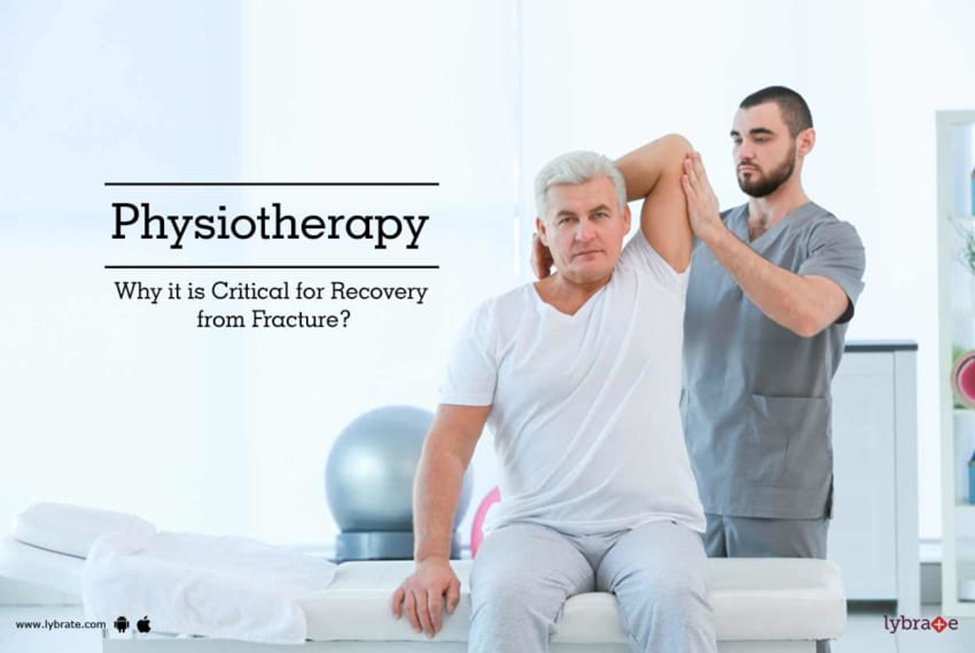How does physiotherapy help in recovering from post-fracture elbow stiffness?

Dr. Dilip Mehta, an orthopedic doctor in Jaipur, highlights why it is essential to seek physiotherapy to recover from post-fracture elbow stiffness.

https://www.docshealth.com/wp-content/uploads/2021/12/Elbowpain.jpg
Post-fracture stiffness is a common complication that can occur after a bone fracture. It refers to a decrease in the range of motion and function of the affected joint due to the formation of scar tissue, adhesions, and muscle contractures.
The formation of scar tissue is a natural part of the healing process after a fracture, but it can also limit the joint's range of motion. Adhesions are bands of fibrous tissue that can form between the injured bone and surrounding soft tissue, restrict range of motion. Muscle contractures refer to the shortening of the muscle tissue around the joint, which can occur if the joint is not moved enough during the healing process.
Post-fracture stiffness can occur in any joint, but it is most common in the elbow, knee, ankle, and wrist. It can cause pain, muscle weakness, and difficulty performing daily activities. If not appropriately treated, post-fracture stiffness can lead to permanent joint dysfunction and limitation of motion.
What is post-fracture elbow stiffness?
Post-fracture elbow stiffness refers to a decrease in the elbow joint's range of motion and function after an elbow fracture. It can occur due to the formation of scar tissue, adhesions, and muscle contractures that develop as part of the healing process.

Post-fracture elbow stiffness can cause pain, muscle weakness, and difficulty performing daily activities. It can also lead to permanent joint dysfunction and limitation of motion if not appropriately treated.
Therefore, physical therapy, including a range of motion exercises, manual therapy, and soft tissue mobilization, is typically recommended to help reduce post-fracture elbow stiffness and improve joint function.
What do orthopedic surgeons suggest to cure post-fracture elbow stiffness?
Leading orthopedic surgeon of Jaipur, Dr. Dilip Mehta, suggests a comprehensive physiotherapy plan to treat post-fracture elbow stiffness. He also gives a brief overview of physiotherapy and the likely recommendations to treat such conditions -
Physical therapy (physiotherapy) is an important part of the recovery process after an elbow fracture. The goal of physiotherapy is to regain the range of motion, strength, and function of the affected elbow joint.
Physical therapists will typically use various techniques to help reduce pain and inflammation and improve the elbow joint's range of motion and strength.
These techniques can include:
- Range of motion exercises: Gentle exercises to help increase the joint's flexibility, such as passive and active range of motion exercises.
- Strengthening exercises: Gradually increasing resistance exercises to help regain muscle strength, such as isometric and isotonic exercises.
- Manual therapy: Techniques such as massage, mobilization, and manipulation to help reduce pain and inflammation and improve joint mobility.
- Soft tissue mobilization: To help release adhesions and scar tissue, which can limit the range of motion and cause pain.
- Therapeutic modalities: Heat and cold therapy, ultrasound, and electrical stimulation can reduce pain and inflammation and promote healing.
Education on proper posture and ergonomics:
- To prevent further injury or pain and to improve the patient's ability to perform daily activities.
- Physical therapy treatment plans are usually tailored to the individual's needs and progress and may also include a home exercise program to continue the recovery process at home.
- It's essential to follow the physical therapist's instructions and to continue with the treatment plan until the elbow reaches its full range of motion and strength and the patient can complete their daily activities without pain.
Why is physiotherapy for post-fracture elbow stiffness recommended?
Physical therapy (physiotherapy) is an important part of the recovery process after an elbow fracture, especially for those with post-fracture stiffness. The goal of physiotherapy is to regain the range of motion, strength, and function of the affected elbow joint.
![]()
Physical therapists will typically use various techniques to help reduce pain and inflammation and improve the elbow joint's range of motion and strength.
These techniques can include:
Range of motion exercises:
Gentle exercises to help increase the joint's flexibility, such as passive and active range of motion exercises. The patient should start exercises as soon as possible to avoid the formation of adhesions and muscle contractures.
Strengthening exercises:
Gradually increasing resistance exercises to help regain muscle strength, such as isometric and isotonic exercises. These exercises will help improve the joint's stability and reduce the risk of future injury.
Manual therapy:
Techniques such as massage, mobilization, and manipulation to help reduce pain and inflammation and improve joint mobility.
Soft tissue mobilization:
To help release adhesions and scar tissue, which can limit the range of motion and cause pain.
Therapeutic modalities:
Heat and cold therapy, ultrasound, and electrical stimulation can reduce pain and inflammation and promote healing.
Education on proper posture and ergonomics:
To prevent further injury or pain and to improve the patient's ability to perform daily activities.
Physical therapy treatment plans are usually tailored to the individual's needs and progress and may also include a home exercise program to continue the recovery process at home. It is important to follow the physical therapist's instructions and to continue with the treatment plan until the elbow reaches its full range of motion and strength, and the patient is able.

https://assets.lybrate.com/q_auto:eco,f_auto,w_850/eagle/uploads/cca97c80d89ae5468547088748abbee7/c1ca4c.jpg
What are the benefits after physiotherapy with regard to post-fracture elbow stiffness?
The patient will experience many benefits after physiotherapy with regard to their post-fracture elbow stiffness. The recovery of post-fracture elbow stiffness after physiotherapy can vary depending on the individual's injury, the severity of the stiffness, and how soon the physical therapy begins.
Physical therapy can effectively reduce post-fracture elbow stiffness by regaining the range of motion, strength and function of the affected elbow joint. The therapy will typically include a combination of range of motion exercises, strengthening exercises, manual therapy, soft tissue mobilization, therapeutic modalities and education on proper posture and ergonomics.
Physical therapy treatment plans are usually tailored to the individual's needs and progress, and may also include a home exercise program to continue the recovery process at home. The duration of the treatment will vary depending on the severity of the injury. Still, generally, it takes several weeks to several months to regain the full range of motion and strength of the joint.
It is important to follow the physical therapist's instructions and to continue with the treatment plan until the elbow reaches its full range of motion and strength. Then, the patient can complete their daily activities without pain. If the patient can follow the plan consistently and there are no other underlying issues, for a good recovery.
Dr. Dilip Mehta emphasizes physiotherapy for post-fracture stiffness elbow. He advises his patients to follow the physical therapy plan for improving the range of motion, mobility and functionality of elbow.
